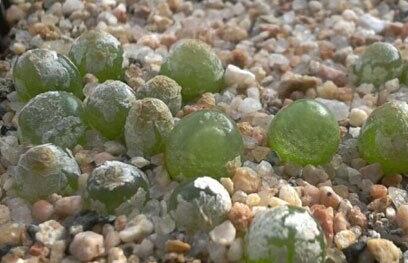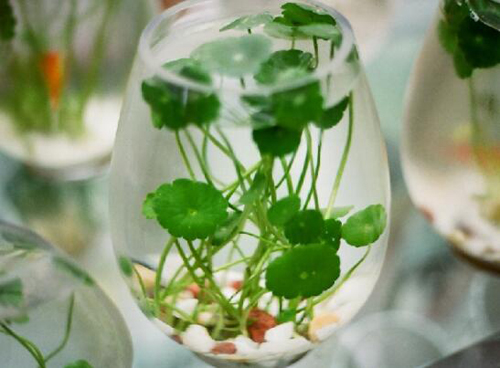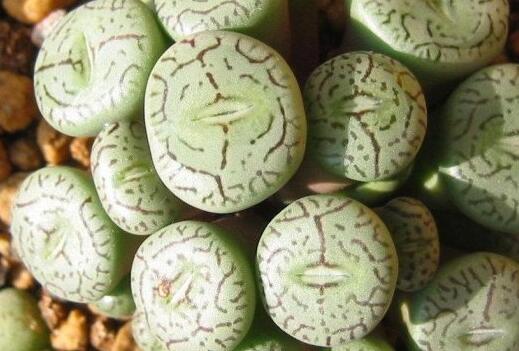Meat cone light bulb how to maintain the best when it blossoms for several years
The meat cone light bulb is a plant of the genus Amygdalaceae. The surface of the plant is bright green and translucent, and it will blossom as long as the environment is right. How long does the meat cone light bulb bloom? the dormant period from May to September is the dormant period of the meat cone flower. After the dormancy period, the flower begins to grow and then blossoms, almost at the end of September and the beginning of October.

The meat cone light bulb has bloomed for several years:
The meat cone light bulb is a plant of the genus Amygdalaceae. The surface of the plant is bright green and translucent, and it will blossom as long as the environment is right. The dormant period is from May to September. After the dormant period, the flowers begin to grow and then blossom, almost like the end of September and the beginning of October.
The skin of the bulb is bright green and translucent. In the dormant period of summer and in the environment with sufficient light, the epidermis is red. The flowers are large purplish red, white in the center, and bloom in spring or autumn. Flowers open during the day and close at night, but it is difficult to blossom if the cultivation environment is not bright enough or on rainy days.
How to raise a meat cone light bulb:
Light bulb meat cones dormant in summer and grow in other seasons. Peeling period is relatively long, almost spread throughout the summer, peeling period can be more sun, but to pay attention to the sun, do not sunburn, peeling period less water or no water supply. From May to the end of July, the peeling period will be extended to summer if there is water supply during the period. The peeling of the light bulb meat cone is that the old leaves slowly dry up, and the new plants grow slowly inside the old plants at the same time. The old plants will slowly dry up into thin dry and brittle skin. Only at this time can it be regarded as a complete peeling success, and the summer is basically protected by dry old skin. Light bulb meat cone likes cool, dry and sunny environment, growing under the condition of large temperature difference between day and night, resistant to drought and afraid of waterlogging.
The plant material of the light bulb meat cone is made of cinder mixed with a small amount of peat, as well as a small amount of red jade soil and blue stone. The surface is covered with granular river sand. Plant materials are mainly permeable and breathable, this variety is not sun-resistant, summer must be sunshaded, spring is the growth period, can be basked in, a small amount of water supply, light bulb this variety is usually less water, a month can not give water, basically watering does not soak the basin. The whole summer sunshade, put in the bright and ventilated scattered light, the whole summer because it is dormant period, also give a small amount of water, more will rot.
The water supply can be restored after the autumn temperature comes down, step by step. If the plant is full, it does not need to be hydrated, otherwise the sphere of the plant is easy to crack. Winter needs to avoid frostbite when the temperature is too low. There is no problem when the basin soil is dry at minus 3 degrees. In winter, because it is a growing period, the plant should be maintained in a sunny place, but do not pour water. If the basin soil is flooded, the plant is very easy to rot. Due to the slow growth rate of light bulbs and low requirements for nutrients, slow-acting fertilizer can be used in the process of cultivation. There is a big difference between the north and the south, and flower lovers should breed according to their own environment.
Light bulb meat cone reproduction can be sown and take place in autumn, that is, from mid-September to late September. Because the seeds of the light bulb are small, they are covered with glass or plastic film after sowing, and the soaking basin method is used for watering before germination, and a small sprayer can be used for spraying at the seedling stage. For the sowing temperature of the light bulb, the temperature at the time of germination should not be too high, about 15 to 20 degrees Celsius during the day and 5 to 10 degrees Celsius at night. There is a little temperature difference, and the temperature of sowing is lower than that of other varieties, so it is more important to do well the sterilization of seedling pot.
Light bulb meat cones can also be propagated by split-plant method, but who wants to, after all, is a slow-growing variety, and do not like to split up. Of course, the meat cone of the light bulb is only beautiful when it is born in groups.
Conophytum burgeri bulb Conophytum burgeri apricot genus, origin: South African bulb is a winter type species. The plant is stemless, usually single-headed, and many-headed groups will appear after a long period of time. The plant is hemispherical, the epidermis is bright green and translucent. In the cold season, the temperature difference between day and night is large, the air humidity is high and the light is sufficient, the epidermis is red. Light bulb flowers light purplish red, autumn open, cross-pollination, diurnal blooming. If the cultivation environment is lack of light or rainy days, it is difficult to blossom. The light bulb sleeps in summer and grows in other seasons. Peeling period is relatively long, almost spread throughout the summer, peeling period can be more sun, but to pay attention to the sun, do not sunburn, peeling period less water or no water supply. The peeling period will be extended to summer if there is water supply during the period from May to the end of July. The desquamation of the light bulb is that the old leaves slowly dry up, and the new plants grow slowly in the old plants at the same time. The old plants will slowly dry up into thin dry and brittle skin. Only at this time can it be considered a complete peeling success, and the summer is basically protected by dry old skin. Light bulbs like cool, dry and sunny environment, grow under the condition of large temperature difference between day and night, resistant to drought and afraid of waterlogging. The kite is planted with cinder mixed with a small amount of peat, as well as a small amount of red jade soil and blue stone. The surface is covered with granular river sand. Plant materials are mainly permeable and breathable, this variety is not sun-resistant, summer must be sunshaded, spring is the growing period, you can sun, a small amount of water, light bulbs this variety is usually less water, kites can not give water several times a month, basically watering does not soak the basin. The whole summer sunshade, put in the bright and ventilated scattered light, the whole summer because it is dormant period, also give a small amount of water, more will rot. The water supply can be restored after the autumn temperature comes down, step by step. If the plant is full, it does not need to be hydrated, otherwise the sphere of the plant is easy to crack. Winter needs to avoid frostbite when the temperature is too low. There is no problem when the basin soil is dry at minus 3 degrees. In winter, because it is a growing period, the plant should be maintained in a sunny place, but do not pour water. If the basin soil is flooded, the plant is very easy to rot. Due to the slow growth rate of light bulbs and low requirements for nutrients, slow-acting fertilizer can be used in the process of cultivation. There is a big difference between the north and the south, and flower lovers should breed according to their own environment. Reproduction can be sown and take place in autumn, that is, from mid-September to late September. Because the seeds of the light bulb are small, they are covered with glass or plastic film after sowing, and the soaking basin method is used for watering before germination, and a small sprayer can be used for spraying at the seedling stage. For the sowing temperature of the light bulb, the temperature at the time of germination should not be too high, about 15 to 20 degrees Celsius during the day and 5 to 10 degrees Celsius at night. There is a little temperature difference, and the temperature of sowing is lower than that of other varieties, so it is more important to do well the sterilization of seedling pot. Light bulbs can also be propagated by split-plant method, but who wants to, after all, is a slow-growing variety, and do not like to split up. Of course, meat cones are only beautiful when they are born in groups. The following pot is that the kite-raised light bulb is basically off in mid-June, and the old leaves are like transparent Kraft paper, wrapped around the plant, which can protect the plant and blossom around October. Below is the kite sowing light bulb for 2 years. The significance of cultivation of many-headed plants of Amygdaceae; succulent plants of Amygdaceae have been cultivated and popularized in China for decades, and flower markets and homes of the common people have been seen more or less. Enthusiasts are gradually increasing, and the techniques, varieties and grades of cultivation have also reached a new stage. Therefore, the cultivation of generous, vibrant and more ornamental multi-headed plants is the development trend of the cultivation of succulent plants of Amygdalaceae. The cultivation of many-headed plants is a test of patience and perseverance. It is not very difficult for some genera of the family Amygdaceae to cultivate plants with a large number of heads and large clumps. For example, the species of Chrysanthemum morifolium and Quick knife Hemp take much less time than other species, and can be bred in 3-5 years. However, many kinds of stone flowers have to be bred into many large plants, which is still a test of people's patience and perseverance. If the species of the genus Cone are sown and propagated, there will be many disadvantages: the seeds are extremely small, the growth is slow after germination, and the characteristics of adult plants can not be seen until 2-3 years later, so many enthusiasts would rather use the most convenient method to buy their favorite varieties directly, and then cut them separately to a certain extent. For example, when the soil and water conditions are suitable, the original one can be divided into seven at most, and the less split can be divided into two or three. The same is true of mouth flute and Qingji. To cultivate a long head, as long as it is a single head for more than 3 years, and it will take a few more years, it will be enough to breed a pile of multi-headed clumps. Anzhen series and medal series, which are more popular and relatively difficult to cultivate. As long as there is a larger single head, 3-5 years is enough to grow many-headed plants. The species of the genus Campanulaceae split slowly, but it is easy to grow seedlings by sowing, and it can also be cultivated into many-headed plants after 4-5 years. Florists generally believe that it is not easy to separate popular varieties such as rubies, red diamonds and light bulbs. After molting in most years, it is still single, and there may be only one or two parting in a few years. Of course, as long as they are maintained for a considerable number of years, they will still split up, but they have to be patient and wait. The species of the genus Calyx are completely different in head speed and numerical address due to different species lines. For example, the stone flower of the Japanese jade series can grow to the size of 6 centimeters per plant, but it will be single in most subsequent years. Some raw stone flowers are divided into 2 heads in the 4th year after sowing, but they have been maintained for 13 years and are still 2. On the other hand, Yunyingyu began to split up in the second year after sowing, and the number of heads reached more than 30 after 4-5 years. Mrs. Li, Li Hongyu and other kinds of separation speed is also very fast. It can be seen that if we want to cultivate satisfactory multi-headed plants of Prunus officinalis, we must first have sufficient mental preparation. It usually takes 315 years from sowing to flowering. Being able to blossom indicates that most plants begin to split up. But I would like to point out in particular. It will take at least 10 years for a single plant to grow into more than 10 or even 3050. This time-consuming and painstaking cultivation may be the joy of swallowing apricot plants. It's no use worrying. If you want to quickly cultivate a multi-headed plant in a relatively short time, you may be able to do so with the help of advanced science and technology, but at present, Chinese people do not have such conditions, so they can only rely on the passage of time to fulfill their wishes. The cultivation of many heads is the progress of horticulture and aesthetic cultivation experience tells us that the rarer the species, the more difficult to plant. Most people agree that red species are more difficult to grow than gray ones, gray-white species are harder to grow than green and gray-green ones, and slow-growing species are harder to grow than fast-growing ones. Individual high-level cultivators and enthusiasts already have their own unique and feasible methods. Some people like to plant several kinds in a pot, even if it is a small single head. Some people like to collect rare individual plants, some like red, some like green, some like unique patterns, and so on. The goal of enthusiasts is to collect, accumulate and cultivate them, and eventually develop multiple plants one day. We know very well that it takes time and effort to cultivate a pot of long-headed apricots, and of course its aesthetic value and commercial price are self-evident. The question is how can we preserve the varieties we have collected. Let it thrive, and then develop into an ideal multi-headed plant. That's what we're going to talk about next, and it's one of the implications of what I mean by horticultural progress. The second implication is that new varieties may be born in the process. If you do not choose a new variety, as long as flowering, pollination, you can receive seeds. At the same time, the original plant is also splitting up, blossom and seed again next year, and then split up. In the process. Is it possible to breed more popular horticultural varieties if they are artificially crossed and selected? There are so many popular horticultural varieties in Japan, the Netherlands and other countries, not all of them are bred by professionals! Ordinary enthusiasts and cultivators can also complete this seemingly complex and esoteric gardening behavior. Isn't it a great sense of achievement if a new horticultural variety is bred in the process of cultivation? At the same time, the varieties collected are also growing stronger and bigger, dividing out the bulls, which is the real best of both worlds. So how to cultivate multi-headed plants of Amygdalaceae? The next article is a strategy for the cultivation of many-headed plants of Amygdaceae.
- Prev

What are the matters needing attention in how to raise copper grass in water?
Rabdosia angustifolia is a kind of plant with very tenacious vitality. even if its leaves are carelessly bowed by the sun when cultivated in soil, it may stand up overnight even if it is watered overnight, and it is very suitable for hydroponics. Let's take a look at how to grow it in water. How to raise copper money grass in water: 1. We need to deal with the roots of copper money grass.
- Next

The cultivation and maintenance method of meat cone flower teaches you how to raise it best.
Fleshy cone is the general name of apricot family and succulent plant. It has many varieties and different shapes. The common characteristic is that the plant is small, there are a pair of very fleshy opposite leaves directly above the root, and the leaf shape is spherical and inverted conical. Its lower part is United, integrated, and there are cracks of different depth at the top.
Related
- Fuxing push coffee new agricultural production and marketing class: lack of small-scale processing plants
- Jujube rice field leisure farm deep ploughing Yilan for five years to create a space for organic food and play
- Nongyu Farm-A trial of organic papaya for brave women with advanced technology
- Four points for attention in the prevention and control of diseases and insect pests of edible fungi
- How to add nutrient solution to Edible Fungi
- Is there any good way to control edible fungus mites?
- Open Inoculation Technology of Edible Fungi
- Is there any clever way to use fertilizer for edible fungus in winter?
- What agents are used to kill the pathogens of edible fungi in the mushroom shed?
- Rapid drying of Edible Fungi

